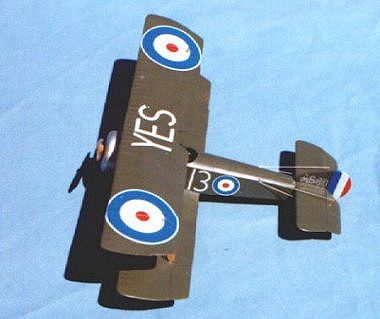
Kit: SOPWITH "PUP"
Scale: 1/48
Manufacturer: Eduard
MSRP: $24.95
Media: Limited-run injection-molded plastic/cast resin/photo-etch brass detail
Decals: two different aircraft
Accuracy: Looks good to me
Overall: Another Eduard A+
Reviewer: Thomas McKelvey Cleaver (THE AERONUT)
Date of Review: 22 October 1997

The Sopwith Pup was the first British fighter with a machine gun synchronized to fire through the prop. Unfortunately for the Royal Naval Air Service, who first brought it to service, and the Royal Flying Corps who also used it, it was a generation behind the opposing Albatros D.I and D.II fighters, with only one machine gun and a top speed under 100 mph. It was however, delightfully maneuverable and managed to hold its own over the Dunquerque and Somme fronts until replaced by the much more formidable (both to its pilots and the enemy) Camel. It was also the first carrier-based fighter in the world, and was used at sea by the RNAS until the end of the war. I know a couple of homebuilders who have constructed Pup replicas, and they say it's so responsive that if the pilot sticks his arm out to one side, it will turn in that direction.
This kit of the Pup has been out a couple of years. The Pup and the Sopwith Triplane, which was released almost simultaneously, were the first Eduard kits to use their new injection molding system, which gives a quality right up there with the mainstream manufacturers. The wings and tail are thin and have a very nice fabric-over-airframe effect.
If you haven't built a biplane before, this is a nice kit to start out on. The overall construction is simple, with a folded photo-etch brass cockpit interior and seat, a cast resin machine gun, and white metal rotary engine. For those who approach biplanes with apprehension, the rigging is among the most simple of any World War I airplane. As I usually do with World War I models, I articulated the control surfaces and rigged it with .008 brass wire painted silver.
The kit decals are fine, and go down easily. The red and blue of the insignia is much more accurate than I had expected. I chose the more colorful of the two sets of markings, for No.1 RNAS at the Dunquerque Front in Fall 1916.
I hate to say it, but to me the Pup is cute and always will be. I enjoy looking at mine there on the shelf with the other World War I models of my collection.